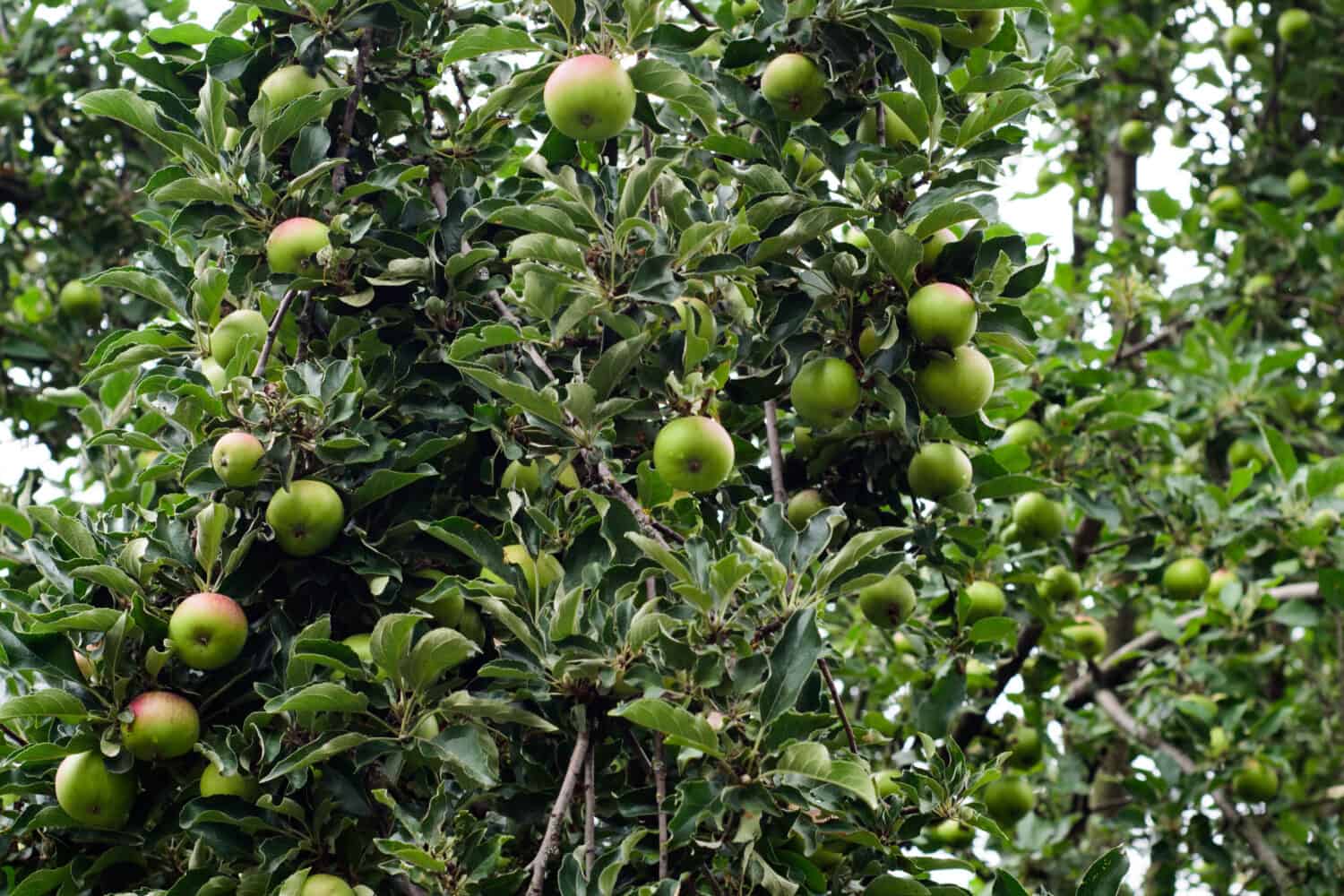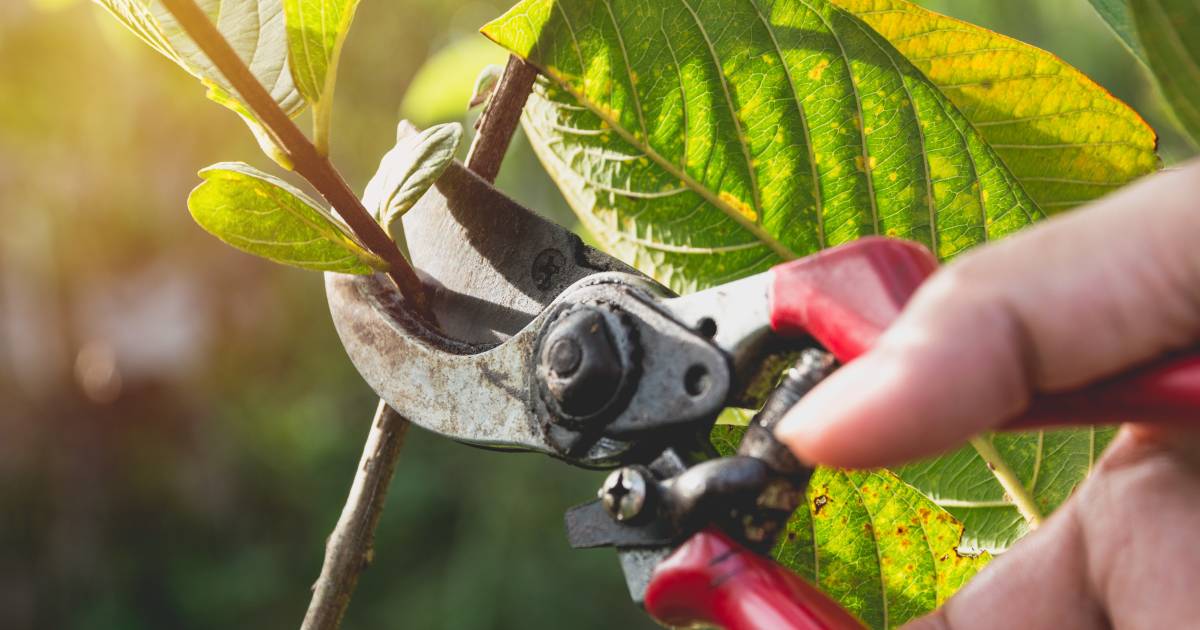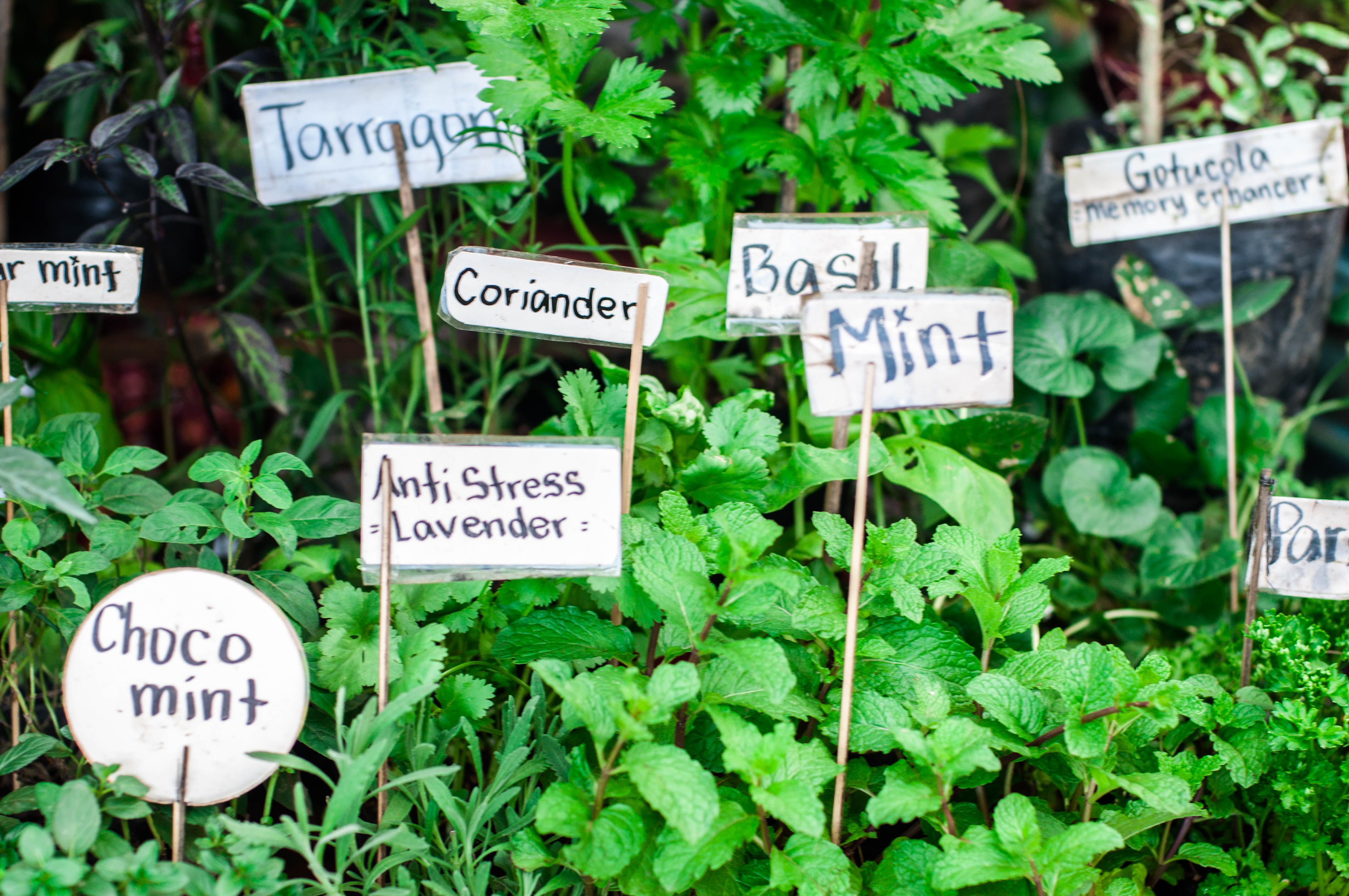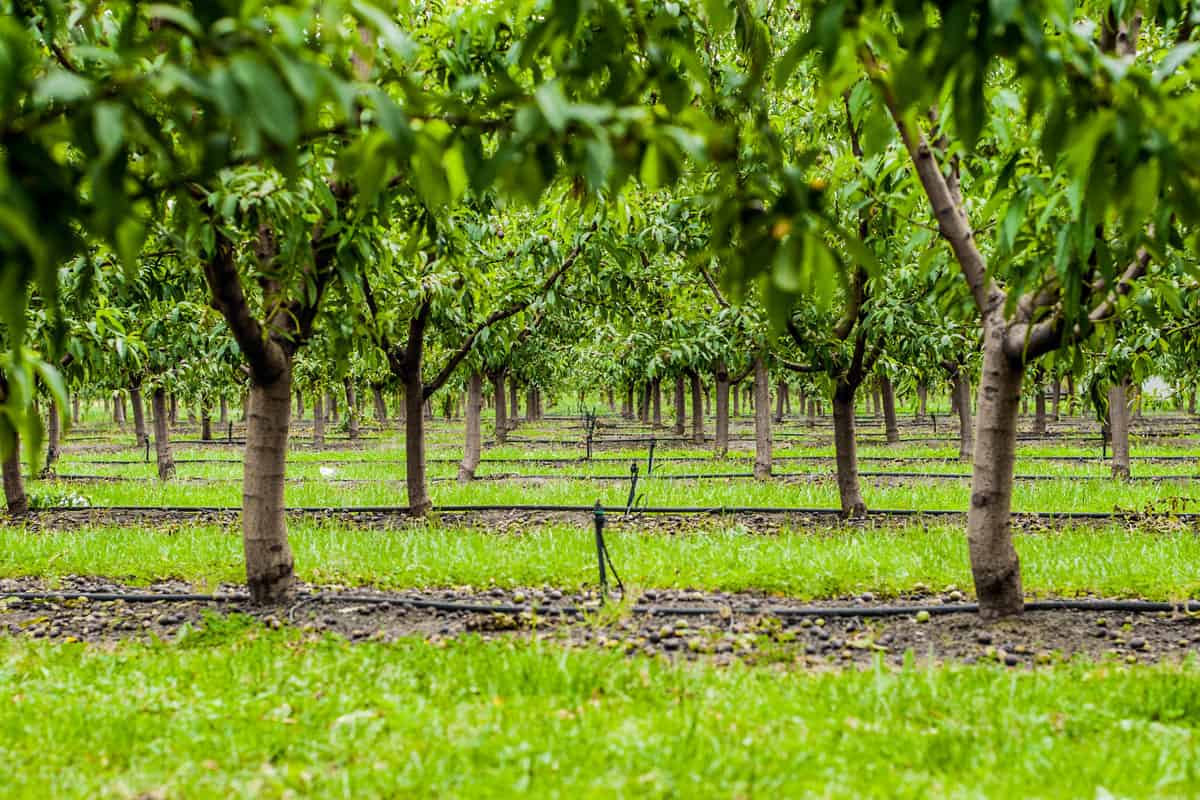Home>Gardening Tips and Tricks>Maximizing Yield>When Do You Fertilize Fruit Trees


Maximizing Yield
When Do You Fertilize Fruit Trees
Published: November 1, 2023
Learn the best time to fertilize fruit trees for maximizing yield with our expert tips and guidelines. Boost your harvest this season!
(Many of the links in this article redirect to a specific reviewed product. Your purchase of these products through affiliate links helps to generate commission for Chicagolandgardening.com, at no extra cost. Learn more)
Table of Contents
Introduction
When it comes to growing healthy and productive fruit trees, proper fertilization is key. Fruit trees require essential nutrients to thrive, produce abundant blooms, and yield a bountiful harvest. However, knowing when and how to fertilize fruit trees can be a daunting task for many gardeners.
In this article, we will delve into the world of fruit tree fertilization, exploring the factors to consider, the best types of fertilizers to use, and the optimal times to apply them. Whether you are a seasoned gardener or just starting out, understanding the art of fertilizing fruit trees will help maximize your tree’s yield and promote its overall health.
Before diving into the specifics, it is important to note that fertilizing fruit trees is not a one-size-fits-all approach. Different trees have varying nutrient requirements, soil conditions, and growth stages. Therefore, it is crucial to take these factors into consideration before implementing a fertilization regimen.
Factors such as the tree’s age, variety, size, and health should be evaluated before applying any fertilizers. Additionally, conducting a soil test can provide valuable insights into the nutrient deficiencies and pH levels in your soil. Armed with this knowledge, you can make informed decisions about the type and amount of fertilizer needed for optimal tree growth.
When it comes to fertilizers, there are various options available on the market. Organic fertilizers, such as compost, manure, and bone meal, are derived from natural sources and release nutrients slowly over time. On the other hand, synthetic or inorganic fertilizers provide a concentrated dose of essential nutrients and are readily available to the trees.
Now that we have set the foundation, let’s explore the best times to fertilize fruit trees, the correct techniques to apply fertilizers, and the common mistakes to avoid. By following these guidelines, you will ensure that your fruit trees are on the path to optimal growth, health, and maximum yield.
Factors to Consider Before Fertilizing Fruit Trees
Before reaching for that bag of fertilizer, there are several factors that should be taken into account to ensure successful fertilization of your fruit trees. Understanding these factors will help you make informed decisions about the right type and amount of fertilizer to use. Let’s explore some key considerations:
- Tree Age: The age of your fruit tree plays a crucial role in determining its nutrient requirements. Young trees require more frequent and balanced fertilization to support their rapid growth, while mature trees may have different nutrient needs depending on their fruit-bearing capabilities.
- Tree Variety: Different fruit tree varieties have varying nutrient requirements. Citrus trees, for example, may need higher levels of nitrogen compared to apple or peach trees. Researching the specific nutrient needs of your tree variety is important before selecting fertilizers.
- Tree Size: The size of your fruit tree is another important factor to consider. Larger trees have a greater root mass and may require larger quantities of fertilizer to reach all parts of the tree effectively.
- Tree Health: The overall health of your fruit tree should be assessed before applying fertilizers. Weak or diseased trees may require specialized fertilizers or treatments to address their specific issues.
- Soil Composition: Understanding the composition of your soil is crucial as it affects nutrient availability to your fruit trees. Conducting a soil test can provide essential information about the pH level, nutrient deficiencies, and organic matter content in your soil. This will help determine if any amendments are needed to optimize nutrient uptake.
- Growth Stage: Fruit trees go through different stages of growth throughout the year. For example, during the dormant season, trees require less fertilization as they are not actively growing. Understanding the growth stage of your tree will help you time your fertilization schedule accordingly.
Taking these factors into consideration will allow you to tailor your fertilization approach to the specific needs of your fruit trees. By providing the right nutrients at the right time, you will create an optimal environment for your trees to flourish and yield an abundance of delicious fruits.
Types of Fertilizers for Fruit Trees
Choosing the right type of fertilizer is crucial to ensure that your fruit trees receive the necessary nutrients for healthy growth and abundant fruit production. There are several different types of fertilizers available, each with its own advantages and applications. Let’s explore some common types of fertilizers for fruit trees:
- Organic Fertilizers: Organic fertilizers are derived from natural sources, such as compost, manure, bone meal, and fish emulsion. These fertilizers are often slow-release, meaning they release nutrients gradually over time, feeding the trees for an extended period. Organic fertilizers also improve soil structure and enhance microbial activity, promoting overall soil health.
- Nitrogen-based Fertilizers: Nitrogen is a key nutrient required for healthy growth and leaf development in fruit trees. Nitrogen-based fertilizers contain a higher concentration of nitrogen and help promote vigorous growth and green foliage. However, it is important to use nitrogen fertilizers judiciously to prevent excessive vegetative growth at the expense of fruiting.
- Phosphorus-based Fertilizers: Phosphorus is essential for root development, flowering, and fruit production in fruit trees. Phosphorus-based fertilizers, such as bone meal, provide a good source of phosphorus. They are particularly beneficial for young trees to support robust root growth and early fruiting.
- Potassium-based Fertilizers: Potassium, also known as potash, plays a vital role in overall plant health and fruit quality. Potassium-based fertilizers promote strong stems and root systems, improve disease resistance, and enhance fruit flavor and color. These fertilizers are especially important for fruit-bearing trees as they need a sufficient supply of potassium for optimal fruit development.
- Complete Fertilizers: Complete fertilizers are formulated to provide a balanced blend of essential nutrients, including nitrogen, phosphorus, and potassium. These fertilizers are often labeled with NPK ratios (representing the percentage of each nutrient) and are suitable for general fertilization needs of fruit trees. They ensure that trees receive a well-rounded nutrient supply for overall growth and fruit production.
- Foliar Fertilizers: Foliar fertilizers are applied directly to the leaves of the tree as a spray. These fertilizers are quickly absorbed by the leaves, providing a rapid nutrient boost. While foliar fertilizers are not a replacement for regular soil fertilization, they can be used as supplements during critical growth stages or to address specific nutrient deficiencies.
When selecting a fertilizer, consider the specific nutrient needs of your fruit trees, as well as any deficiencies detected through soil testing. It is also important to follow the manufacturer’s instructions for application rates and timing. By choosing the right type of fertilizer and using it correctly, you will provide your fruit trees with the nutrients they need to thrive and produce a bountiful harvest.
Best Times to Fertilize Fruit Trees
Timing is everything when it comes to fertilizing fruit trees. Applying fertilizers at the right time ensures that the nutrients are available when the trees need them the most. Here are some guidelines to help you determine the best times to fertilize your fruit trees:
- Early Spring: One of the best times to fertilize fruit trees is in early spring, just before new growth begins. Fertilizing at this time provides a boost of nutrients to support the tree’s early growth and development. It is especially important for young trees that are still establishing their root systems and for trees that did not receive fall fertilization.
- After Harvest: Another optimal time to fertilize fruit trees is immediately after harvest. After fruiting, trees need to replenish their nutrient reserves to support future growth and fruit production. Applying fertilizer at this time ensures that the trees have the nutrients they need to develop strong buds for the following year’s crop.
- During the Growing Season: Depending on the specific needs of your fruit trees, you may need to apply additional fertilizer during the growing season. This is especially true for fruit-bearing trees that have a long growing season or multiple flushes of growth. Splitting the fertilizer application into multiple smaller doses can help provide a steady supply of nutrients throughout the growing season.
- Avoid Fertilizing in Late Summer or Fall: It is generally not recommended to fertilize fruit trees in late summer or fall. Applying fertilizer during this time can stimulate new growth that may be susceptible to winter damage. It is best to allow the trees to naturally enter their dormant period without excessive vegetative growth.
Keep in mind that the timing of fertilization may vary depending on the specific climate, soil conditions, and growth habits of your fruit trees. It is always a good idea to consult local gardening resources or seek advice from experienced gardeners in your area who can provide guidance tailored to your specific region.
Remember, fertilizer is not a cure-all solution. It should be used in conjunction with proper pruning, watering, and overall tree care practices to maximize the health and productivity of your fruit trees. By fertilizing at the appropriate times, you will provide your trees with the essential nutrients they need to thrive and produce a plentiful harvest.
How to Fertilize Fruit Trees
Fertilizing fruit trees is a simple yet important task that can greatly impact their growth and productivity. By following proper techniques, you can ensure that your trees receive the right amount of nutrients and maximize their potential. Here is a step-by-step guide on how to fertilize fruit trees:
- Choose the Right Fertilizer: Select a fertilizer that is appropriate for the specific nutrient needs of your fruit trees. Consider factors such as the tree’s age, variety, and soil conditions. Refer to the fertilizer packaging or consult with a local gardening expert for guidance if needed.
- Measure the Fertilizer: Follow the recommended application rates provided on the fertilizer packaging. Use a measuring cup or scale to ensure accurate measurements. Applying too much fertilizer can potentially harm the tree, while too little may not provide enough nutrients for optimal growth.
- Apply Fertilizer to the Drip Line: The drip line refers to the outermost edge of the tree’s canopy. Spread the fertilizer evenly within this area, ensuring that it is distributed around the entire circumference of the tree. Avoid applying fertilizer directly against the trunk, as it may cause damage.
- Work Fertilizer into the Soil: Once the fertilizer is evenly distributed, use a garden fork or rake to gently work it into the top layer of soil. This will help incorporate the nutrients into the root zone where the tree can readily absorb them. Be careful not to damage the tree’s roots during this process.
- Water Thoroughly: After applying the fertilizer, give the tree a deep watering. This will help dissolve and carry the nutrients into the root zone. Watering will also prevent the fertilizer from sitting on the surface, where it may evaporate or leach away before the roots can absorb it.
- Mulch: Apply a layer of organic mulch around the base of the tree, leaving a small gap around the trunk to prevent moisture-related issues. Mulching helps conserve soil moisture, suppresses weeds, and gradually releases nutrients into the soil as it decomposes.
Remember to fertilize your fruit trees according to their specific needs and the fertilizer’s instructions. It is generally recommended to fertilize in early spring and after harvest, but additional applications may be necessary depending on your tree’s growth rate and nutrient requirements. Regular monitoring of your trees’ overall health and growth will help you determine if additional fertilization is needed.
Following these steps will ensure that your fruit trees receive an adequate and balanced supply of nutrients for optimal growth, fruit production, and overall health.
Signs of Over or Under-Fertilization in Fruit Trees
Fertilizing fruit trees is important for their growth and productivity, but it is equally crucial to ensure that you do not over or under-fertilize them. Both scenarios can have negative effects on the health and development of your trees. Here are some signs to look out for to determine if your fruit trees are experiencing over or under-fertilization:
- Over-Fertilization:
- Excessive vegetative growth: If your fruit trees are displaying an excessive amount of foliage, such as an abundance of leaves and long shoots, it may indicate over-fertilization. Too much nitrogen can cause vigorous vegetative growth at the expense of fruit production.
- Burning or scorched leaves: Over-fertilization can result in leaf burn, with the edges or tips of the leaves turning brown or crisp. This can occur when fertilizers contain high levels of salts or when applied in excessive concentrations.
- Delayed fruit ripening: Over-fertilization can cause a delay in the ripening of fruits, with the fruit remaining firm and lacking in sweetness. This is often a result of an imbalance in nutrient uptake, particularly an excess of nitrogen.
- Increased susceptibility to pests and diseases: Over-fertilized trees may become more attractive to pests and susceptible to diseases. Lush, succulent growth can be more vulnerable to insect damage and fungal infections.
- Under-Fertilization:
- Stunted growth: If your fruit trees are not growing as vigorously as they should, it may indicate a lack of essential nutrients. Under-fertilized trees may have smaller leaves, shorter shoots, and overall reduced growth compared to healthy trees.
- Pale or yellowing leaves: Nutrient deficiencies, particularly nitrogen deficiency, can cause the leaves to become pale or yellow. This is often most noticeable in younger leaves, while older leaves may remain green.
- Poor fruit production: Insufficient fertilization can lead to reduced or poor fruit production. Fruit size may be smaller than usual, and the overall yield may be lower. Fruits may also exhibit taste and quality issues.
- Inadequate root development: Without proper nutrient supply, root development can be compromised. This can lead to weak anchorage, poor water and nutrient absorption, and overall poor tree health.
It is important to note that these signs can also be indicative of other underlying issues, such as diseases or environmental stress. Therefore, it is essential to carefully observe your trees and consider all possible factors before concluding that they are over or under-fertilized.
Regularly monitoring the growth, foliage, and fruit development of your fruit trees can help you identify any signs of nutrient imbalances. Adjusting your fertilization practices accordingly, based on the specific needs of your trees, will help maintain their health and maximize their productivity.
Common Mistakes to Avoid When Fertilizing Fruit Trees
Fertilizing fruit trees is a crucial task for ensuring their optimal growth and productivity. However, it is important to be aware of common mistakes that can hinder rather than enhance the health of your trees. By avoiding these pitfalls, you can make the most of your fertilization efforts. Here are some common mistakes to avoid when fertilizing fruit trees:
- Over-fertilizing: Applying excessive amounts of fertilizer can harm your fruit trees. In addition to wasting resources, over-fertilization can lead to salt burn, excessive vegetative growth, delayed fruit ripening, and increased susceptibility to pests and diseases. Adhere to the recommended application rates provided on the fertilizer packaging and avoid the temptation to apply more than necessary.
- Under-fertilizing: On the flip side, under-fertilizing can deprive your fruit trees of the necessary nutrients for optimal growth and fruit production. It can result in stunted growth, nutrient deficiencies, poor fruit quality, and inadequate root development. Regularly monitor the overall health of your trees and adjust your fertilization practices accordingly to ensure they receive the nutrients they need.
- Imbalanced fertilizer ratios: Fruit trees require a balanced combination of different nutrients for proper growth and development. Using fertilizers with imbalanced ratios, such as high nitrogen and low phosphorus or potassium, can negatively impact tree health. It is essential to select fertilizers with appropriate NPK (nitrogen, phosphorus, potassium) ratios to meet the specific nutrient requirements of your fruit trees.
- Applying fertilizer too close to the trunk: When applying fertilizer, avoid placing it directly against the trunk of the tree. This can cause damage to the bark and roots. Instead, distribute the fertilizer evenly within the drip line, which is the outermost edge of the canopy. This ensures that the nutrients reach the entire root zone where they are needed most.
- Disregarding soil conditions: Fertilizer effectiveness is greatly influenced by soil conditions. Before fertilizing, conducting a soil test can provide valuable information about nutrient deficiencies, pH levels, and organic matter content. This knowledge will guide you in selecting the right type and amount of fertilizer, as well as any necessary soil amendments, to optimize nutrient uptake.
- Not watering properly: Water is essential for nutrient uptake, so proper watering practices are crucial after fertilizing fruit trees. Ensure the fertilizer is watered in thoroughly to help dissolve and distribute the nutrients within the root zone. Adequate watering also prevents the fertilizer from sitting on the surface and potentially evaporating or leaching away.
- Using damaged or expired fertilizers: Using damaged or expired fertilizers can pose a risk to your fruit trees. Check the packaging for any signs of damage, such as torn bags or moisture infiltration. Also, be mindful of the expiration date to ensure the fertilizer is still effective. Using compromised or expired fertilizers may not provide the intended nutrients or could potentially harm your trees.
By avoiding these common mistakes and following proper fertilization practices, you can provide your fruit trees with the right nutrients at the right time, promoting their health, growth, and overall productivity. Remember to assess your trees’ specific needs, monitor their response to fertilization, and make adjustments as necessary to achieve the best results.
Conclusion
Fertilizing fruit trees is a vital aspect of their care and maintenance, ensuring healthy growth, abundant blooms, and bountiful harvests. By considering factors such as tree age, variety, size, and health, as well as conducting soil tests, you can determine the specific nutrient requirements of your fruit trees and select the most suitable fertilizers.
Understanding the best times to fertilize fruit trees, such as early spring and after harvest, allows you to provide the nutrients at crucial growth stages. Carefully applying the fertilizers to the drip line and working them into the soil helps deliver the nutrients to the roots where they can be absorbed effectively. Thorough watering and proper mulching further support nutrient uptake and retention.
While fertilizing fruit trees is important, it is equally crucial to avoid common mistakes such as over or under-fertilizing, using imbalanced fertilizer ratios, applying fertilizers too close to the trunk, disregarding soil conditions, and neglecting proper watering. These mistakes can lead to negative consequences, including nutrient deficiencies or toxicities, compromised tree health, and reduced fruit production.
By following the guidelines outlined in this article and being attentive to the specific needs of your fruit trees, you can enhance their growth and maximize their yield. Regular monitoring of tree health, adjusting fertilization practices as needed, and seeking local gardening advice when necessary will help you maintain thriving, productive fruit trees for years to come.










